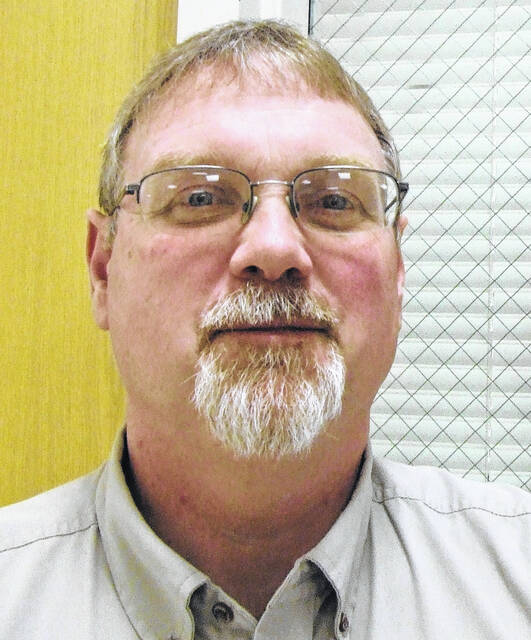
I am hopeful that as we get past this next week farmers will be in the clear to get a lot of planting done. Upwards of 7 inches of rain fell in some places May 3-7, with the majority coming on Friday, May 6.
This ongoing wet weather across the state has slowed soybean planting progress but should be picking up with warmer and dryer weather ahead of us.
As of the last week of April, 2% of the soybean acres in Ohio were planted. Last year at the same time, 17% of soybean acres were planted.
However, 2018 through 2020, planting progress was similar at 1-2%.
As soybean planting continues and plants emerge, here are some things Dr. Laura Lindsey, Ohio State University soybean specialist as well as other soybean specialists across the U. S, suggests looking for as well as some common misconceptions.
What Matters at Planting and Emergence: At this point in the growing season, obtaining a stand of sufficient plant population is the first step in ensuring maximum soybean yield. It is important to seed at a rate that will provide an adequate and relatively uniform stand.
In Ohio, for soybean planted in May, we recommend a seeding rate of approximately 140,000 seeds/acre with the goal of at least 100,000 plants/acre.
Soybean Emergence Misconceptions: There are several common misconceptions about soybean emergence:
Misconception — Soybean plants need to have uniform emergence and uniform spacing aka “the picket fence” to maximize yield.
Reality — Emergence uniformity is not critically important in soybeans. Recent research has shown planter downforce did not impact grain yield regardless of tillage, soil texture or gauge wheel type. Rate of emergence over four days was altered but did not result in yield differences. Additional research has shown no difference between random drop and precision planting until seeding rates were reduced to 40,000 seeds/acre.
Misconception — Seed size of planted seed influences end of season crop yield.
Reality — Seed size can influence percent emergence (smaller seed size increased emergence 10%), but as long as an adequate stand is established, there is no influence of planted seed size on yield. Effect of seed size on emergence is dependent on soil texture, planting depth and environmental conditions from planting through emergence.
Misconception — Supplemental nitrogen is essential to maximize yield in high yield environments.
Reality — Soybeans with active nodules do not require additional nitrogen, even in high yield environments. Yield responses to N are rare, unpredictable, and not economically viable.
Misconception — Suboptimal stands (<80,000 plants/acre) call for an automatic replant.
Reality — Visual stand assessment at VE often underestimates the total number of plants that will emerge. We often ask growers and crop consultants to wait until the VC growth stage to make the call about replanting. Even at suboptimal stands, an automatic replant is not always the best economic decision. Cost of replanting plus added planting date penalties must be considered before replanting.
For soybean and corn fields that have been already planted, recent heavy precipitation and warmer days ahead can build conditions for soil crusting.
Dr. Lyndsey warns soil crusting can become a concern, inducing a shallow hard layer on the soil surface that forms due to rapid drying (e.g., warm days and wind). Conditions prone to soil crusting include conventionally tilled fields (in addition to soil erosion), low cover crop residue, fine soil textures, and soils with low organic matter.
Besides affecting seedling emergence, soil crusting can result in poor growing conditions, reduced stands and plant vigor, and less water infiltration to the soil profile.
For soybean, if you suspect poor emergence due to soil crusting (or any other factor), take a stand count from several areas within your field at the VC growth stage (unifoliate leaves unrolled sufficiently, so the leaf edges are not touching). See the AgCrops Team YouTube channel for a stand count demonstration, https://www.youtube.com/watch?v=XHBL8SCmaKM.
Although a plant population of 100,000 plants/acre is ideal, we do not suggest replanting until the plant population drops to 50,000 plants/acre. Fields with crusting problems can look extremely poor, but the plant stand is adequate, and the field does not need to be replanted.
At low plant populations, soybeans can compensate by increasing the number of branches. In general terms, soybean plants tend to be more/better compensative than corn.
For corn, depending on the planting date, the potential yield loss from a reduced stand may be less than expected.
To assist in this process, the relationship between planting date, plants per acre at harvest, and crop yield for corn and other adjustments/conversions can be found in the AGF-502 Factsheet, https://ohioline.osu.edu/factsheet/agf-502.
For example, a field planted on May 9 or before and with a stand of 25,000 plants/acre at harvest can still achieve 92% or more of the yield obtained at the optimum planting date and population.
Replanting does not guarantee an increase in yields; if replanting happens late, the result can be lower yields (even with higher stands).
Tony Nye is the state coordinator for the Ohio State University Extension Small Farm Program and has been an OSU Extension Educator for agriculture and natural resources for over 30 years, currently serving Clinton County and the Miami Valley EERA.


